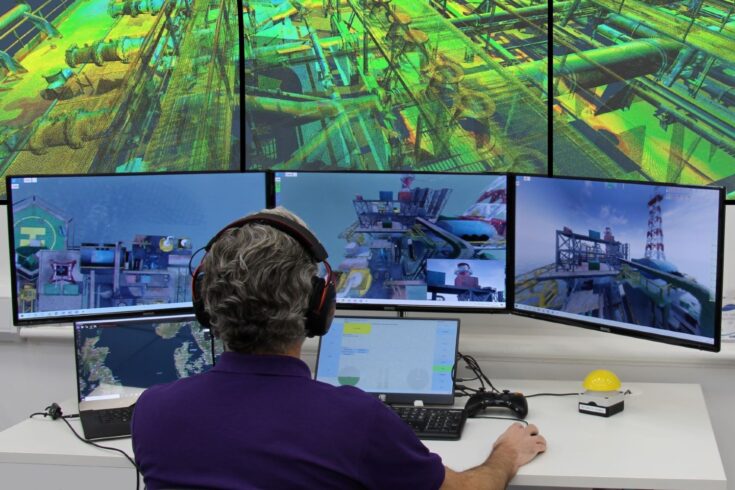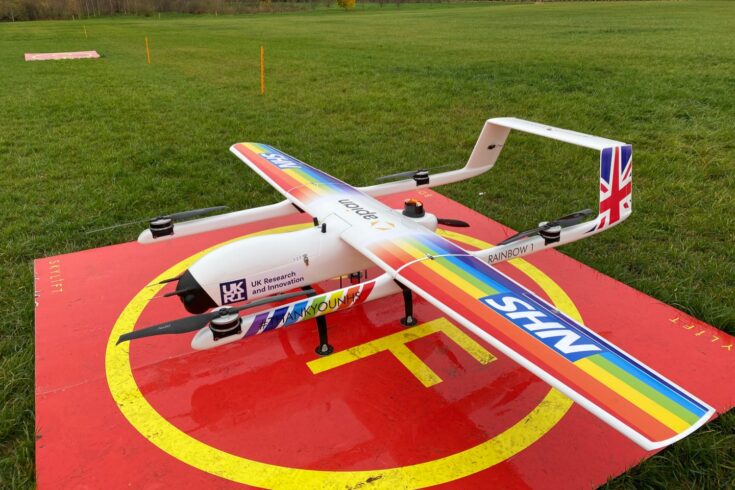In 2020 the COVID-19 pandemic placed huge strain on many industries, as well as the UK’s infrastructure. It changed our behaviour and forced much of society to rethink how we do things. And the aviation industry was no exception.
The future of flight
UK Research and Innovation’s (UKRI) future flight challenge had already been making strides in revolutionising the sector. Backed by £125 million of government funding, we’ve been supporting research and innovative new technology since 2018.
We aim to:
- advance electric and autonomous flight technologies
- increase mobility and connectivity
- reduce congestion.
All with the UK’s net zero ambitions firmly in mind.
Video credit: UKRI
On-screen captions and an auto generated transcript is available on YouTube.
As lockdowns took shape, social distancing came into place and limitations hit the medical and logistics industries. We realised that many of the innovations and ideas in our challenge programme could help solve these problems.
Reactive funding opportunities
We provided almost £4 million across 14 separate projects. We encouraged over 50 different organisations to work with each other across the projects to either:
- tackle a direct resourcing or transport issue for the NHS and wider medical needs or
- research and develop broader solutions for COVID-hit industries.
In each case the focus was on realising the benefits of these new forms of autonomous aviation technology for immediate support. They also had to develop electric-led infrastructure for longer-term need.
Responding to COVID-19 with UK firsts
Our projects secured several significant achievements when it came to ground-breaking applications of technology. Including:
- the first UK drone delivery carrying chemotherapy drugs
- achieving approval to carry two types of COVID-19 vaccine
- completing the first shore-to-ship medical delivery of COVID-19 test kits.
We also found other direct benefits for hospitals themselves. As a project completed the first UK simulation of a drone operation at hospital grounds. We also saw the first hospital to hospital trials taking place in the heart of England.
Raising the bar with further achievements
Through these projects over 750 drone test flights were completed, including:
- the longest flight so far by a parcel delivery drone in the UK
- the first delivery by an autonomous vertical take-off and landing vehicle.
The projects also gained confidence operating in industries that are key to sustaining our economy and way of life such as energy generation and supply. This resulted in the first drone flights from onshore and offshore oil and gas plants using 4G or 5G connectivity.
One project received permission for remote drone flight testing across three UK sites.

A man sat in front of six computer monitors in two rows of three. The top row shows the footage being recorded live by the drone. The bottom row shows the real-world view of the drone’s surroundings. (Credit: Sees.ai)
A new tomorrow for aviation
There are many aspects to consider when planning the future of aviation.
But it has been so rewarding to see these UK firsts taking place. And the determination from some of our finest innovators in the face of challenging working conditions brought on by the pandemic. They’ve gone a long way to showing the world of opportunities that autonomous aviation can bring. But this is only the beginning.
There are various ways the aviation sector can support medical and other vital public services. The technology can offer an efficient and reactive service to industry and wider society.
Future challenges and opportunities
The next challenge for these projects is to:
- assess their success
- refine where necessary
- engage with wider stakeholders and regions
- replicate the service elsewhere in the UK.
The pandemic showed just how fast we can need new innovative solutions. It also showed how urgent and time sensitive medical supplies need no longer rely on the existing transport network. Particularly in more remote areas of the country.
Having shown what is possible, there is now opportunity to bring together experts from across aviation, healthcare and enabling technologies to explore more widespread and enduring adoption of these solutions.
Electric and autonomous flight continues to develop in the UK. UKRI’s future flight challenge is providing the leadership to support the move to an innovative new zero emission and mobile aviation future.
Find out more about the future flight challenge or share on social media.
Top image: A fixed wing drone with rainbow coloured wings sits on a red square helipad in a field. (Credit: Apian)




